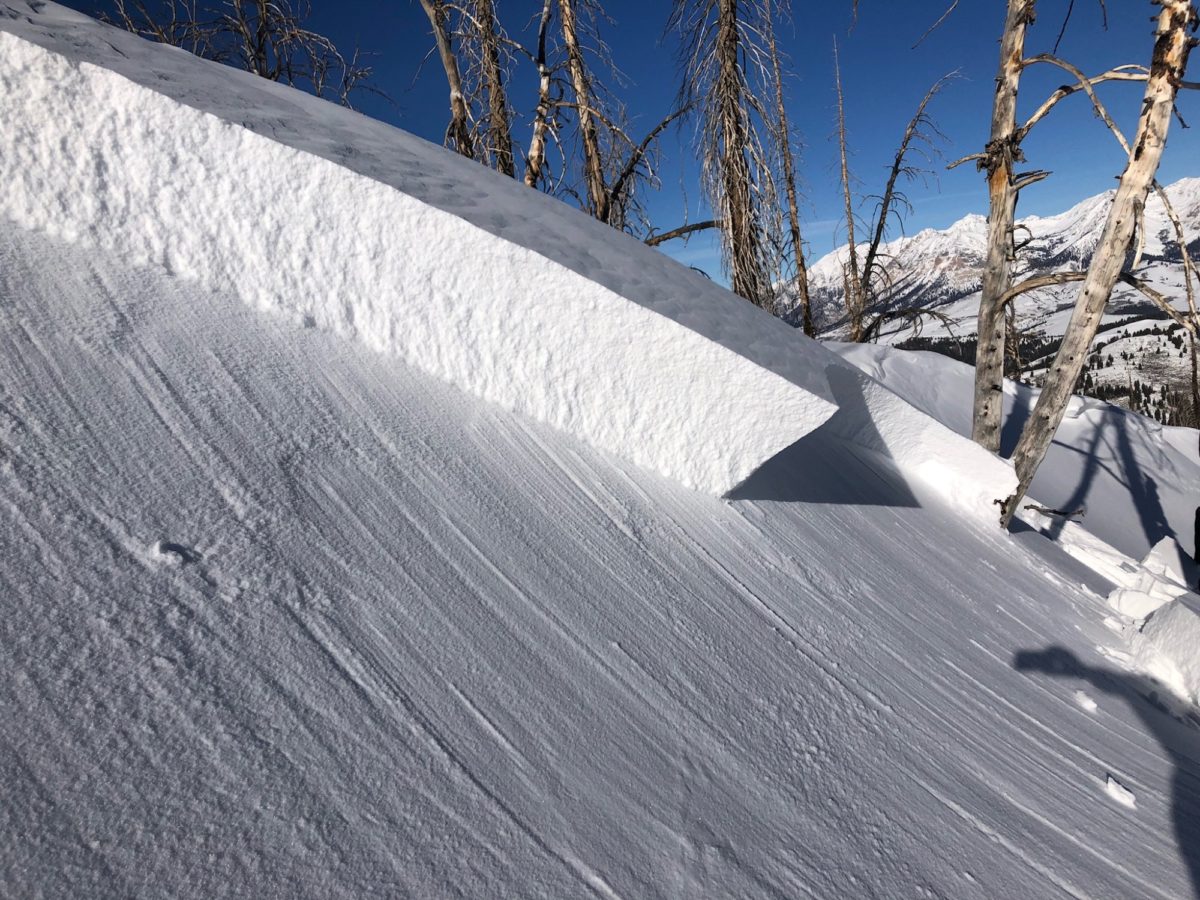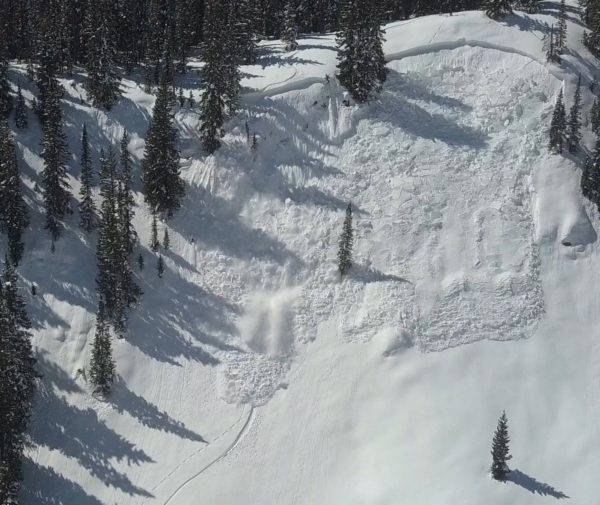A cohesive layer of snow.
The fundamental ingredients for a slab avalanche are a stratigraphic unit of relatively cohesive snow over a less cohesive weak layer. Imagine stacking a textbook on a layer of potato chips. For a slab avalanche to occur, the slab needs to be more cohesive than the weak layer and have sufficient tensile strength to help drive a fracture across the slope. Of course, these specifics vary depending on slab strength, weak layer strength, and slope characteristics. Slabs can be hard or soft, thick or thin. The reason slab avalanches account for the large majority of avalanche accidents is because their failures propagate across the slope and around the victim, making them harder to escape than a point release avalanche. Slabs form as snow settles and becomes denser or winds load or add cohesion to snow.


